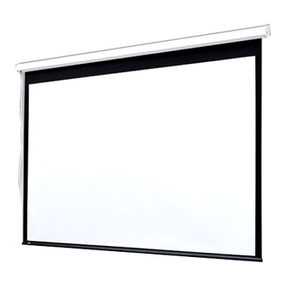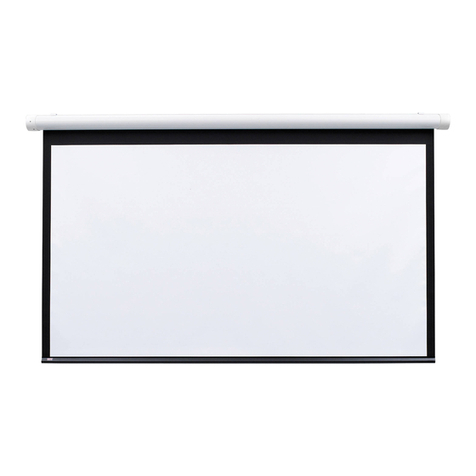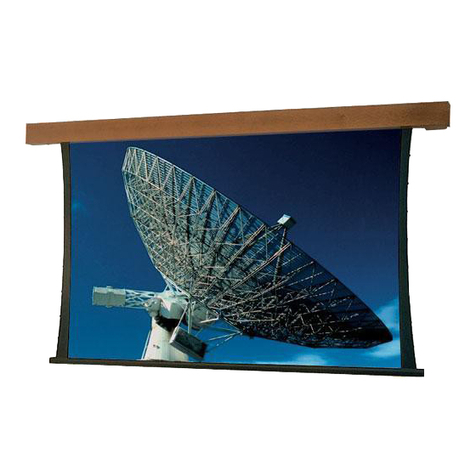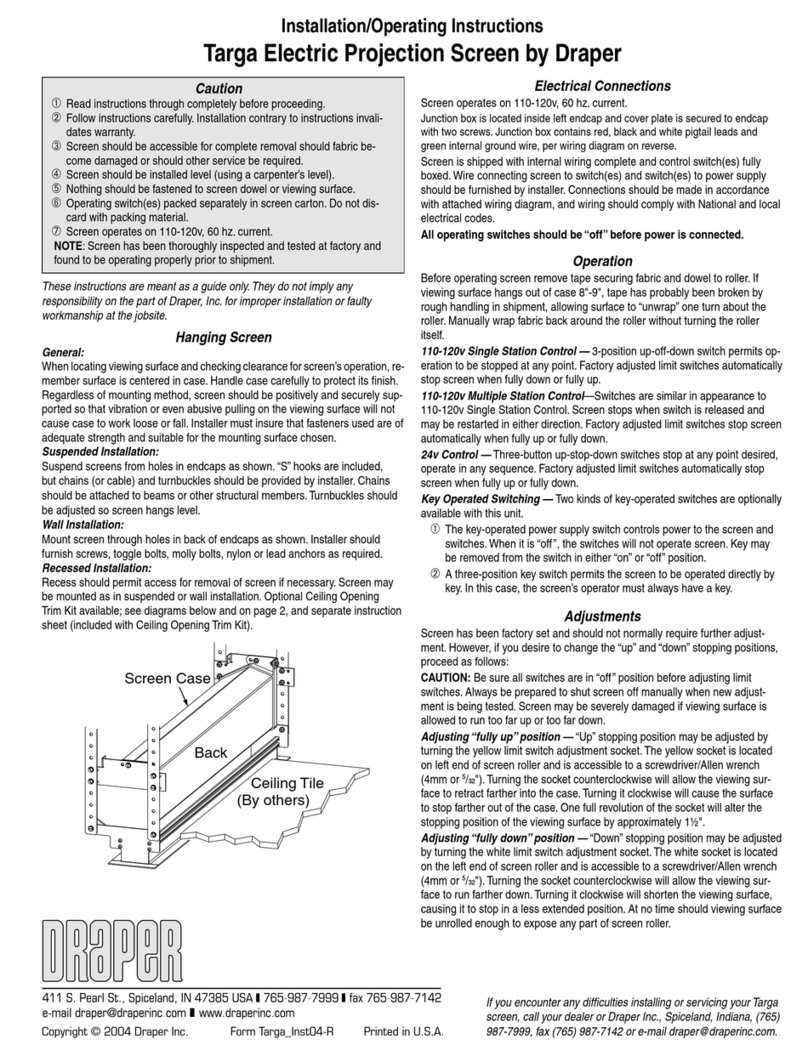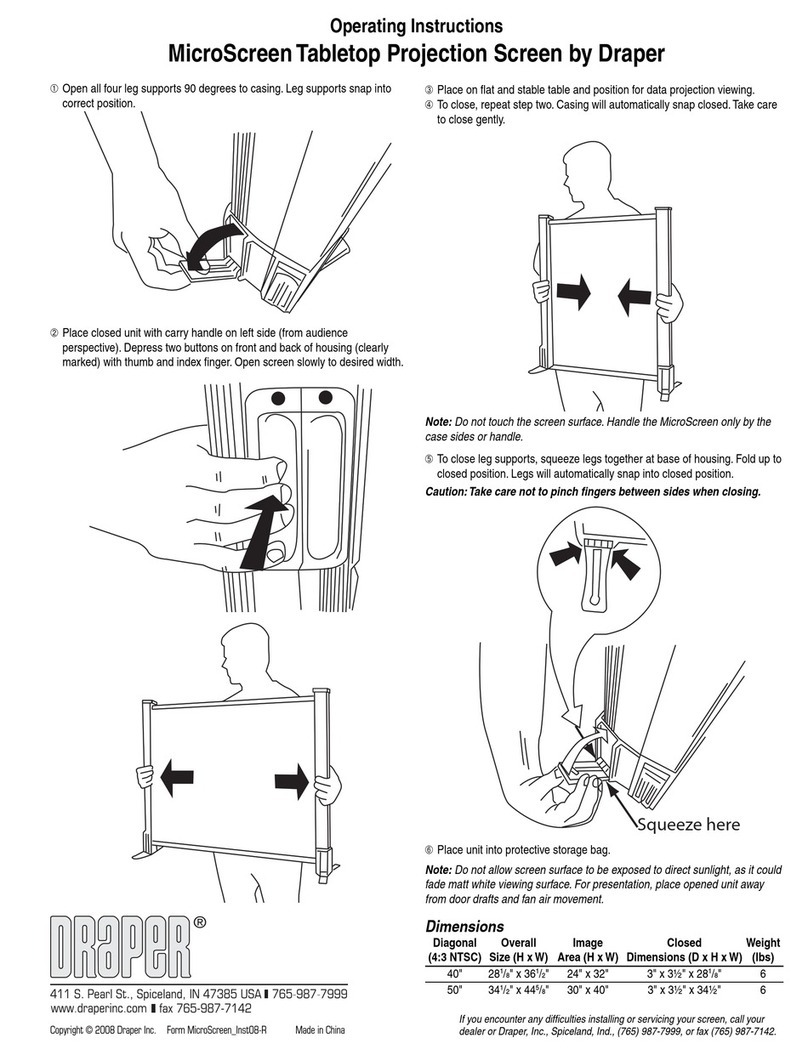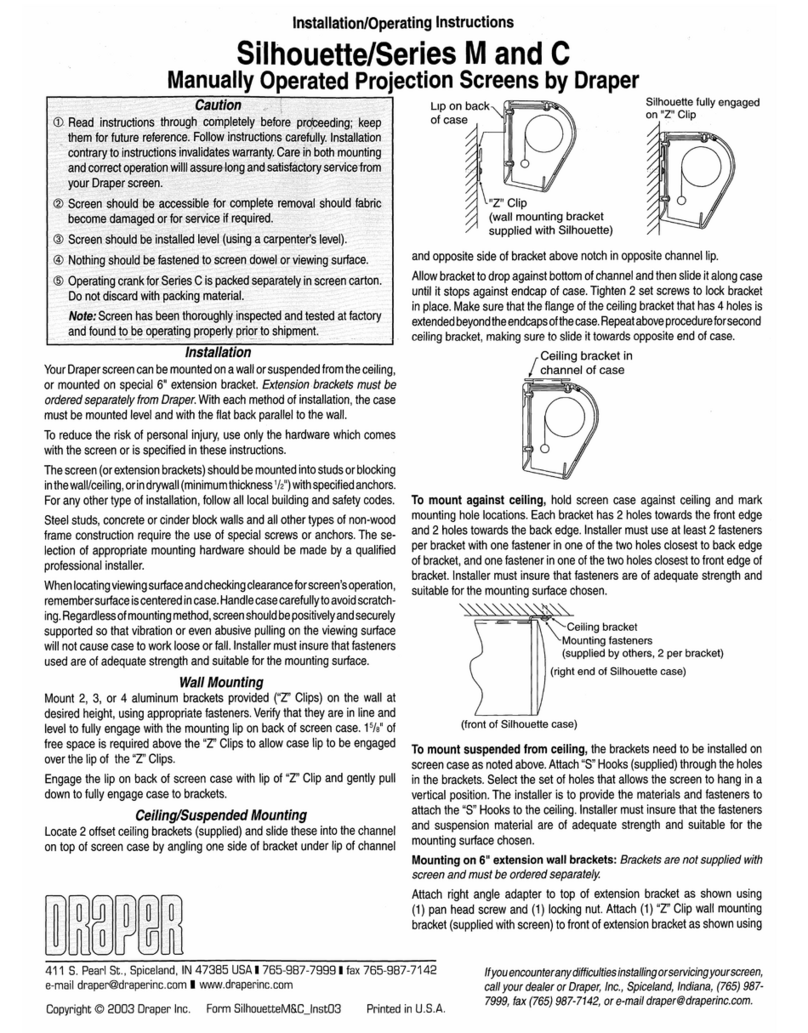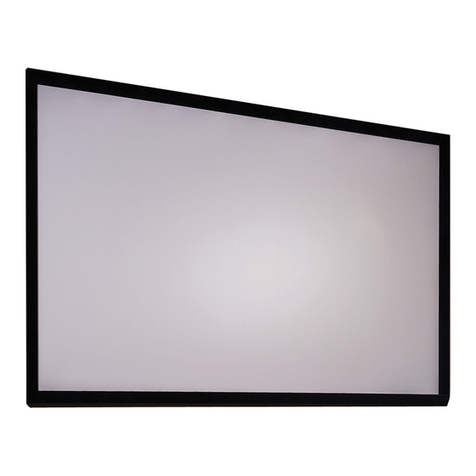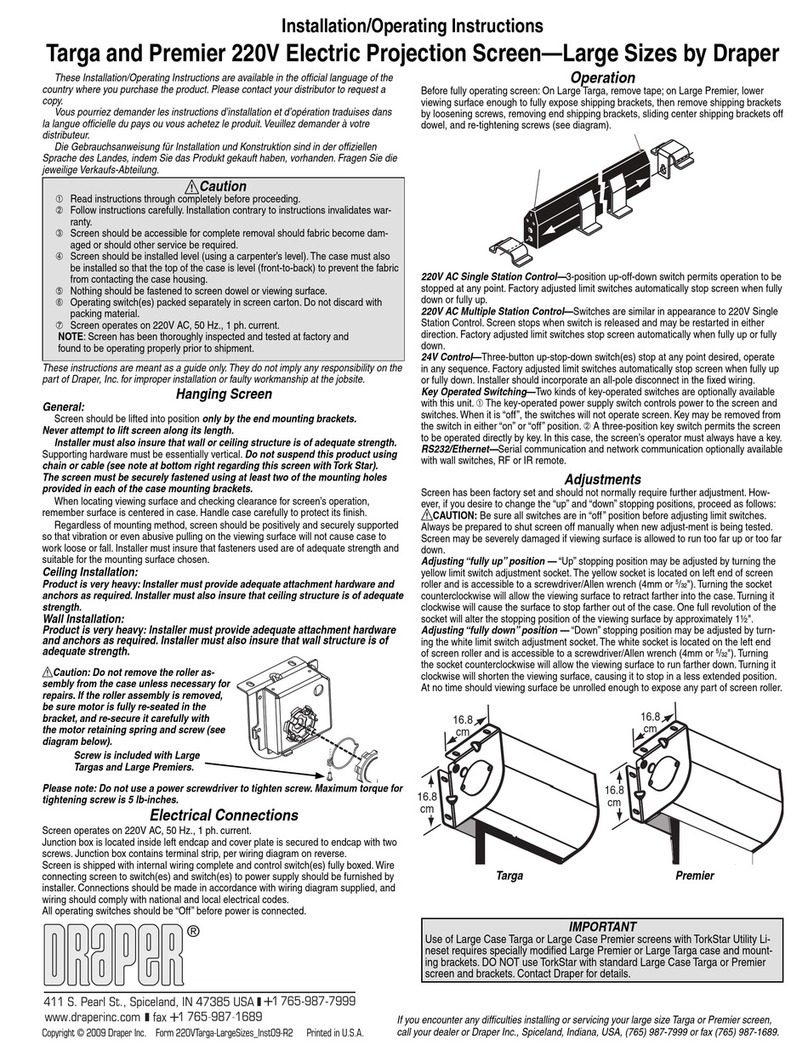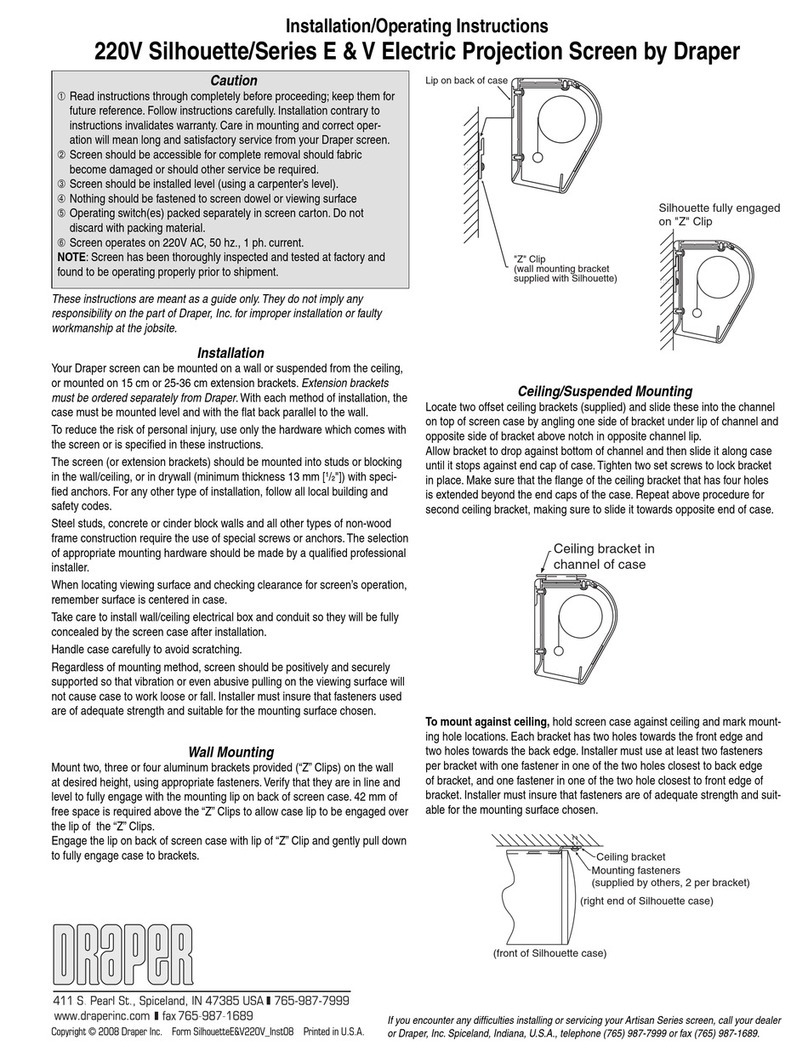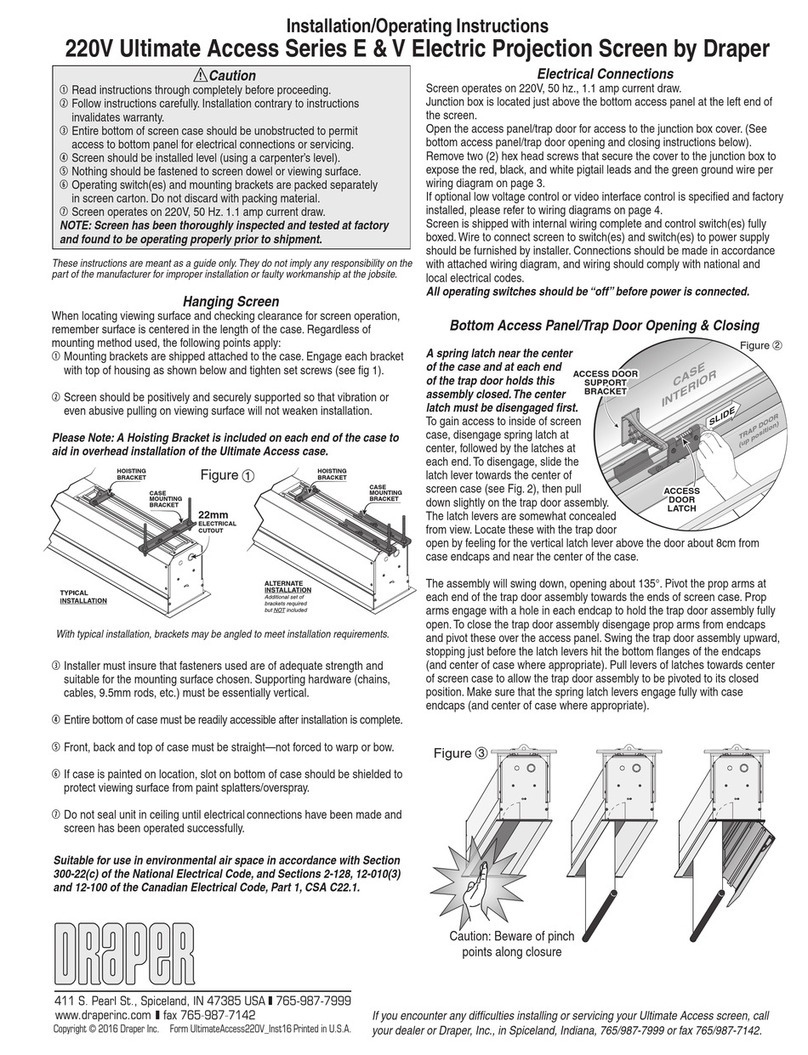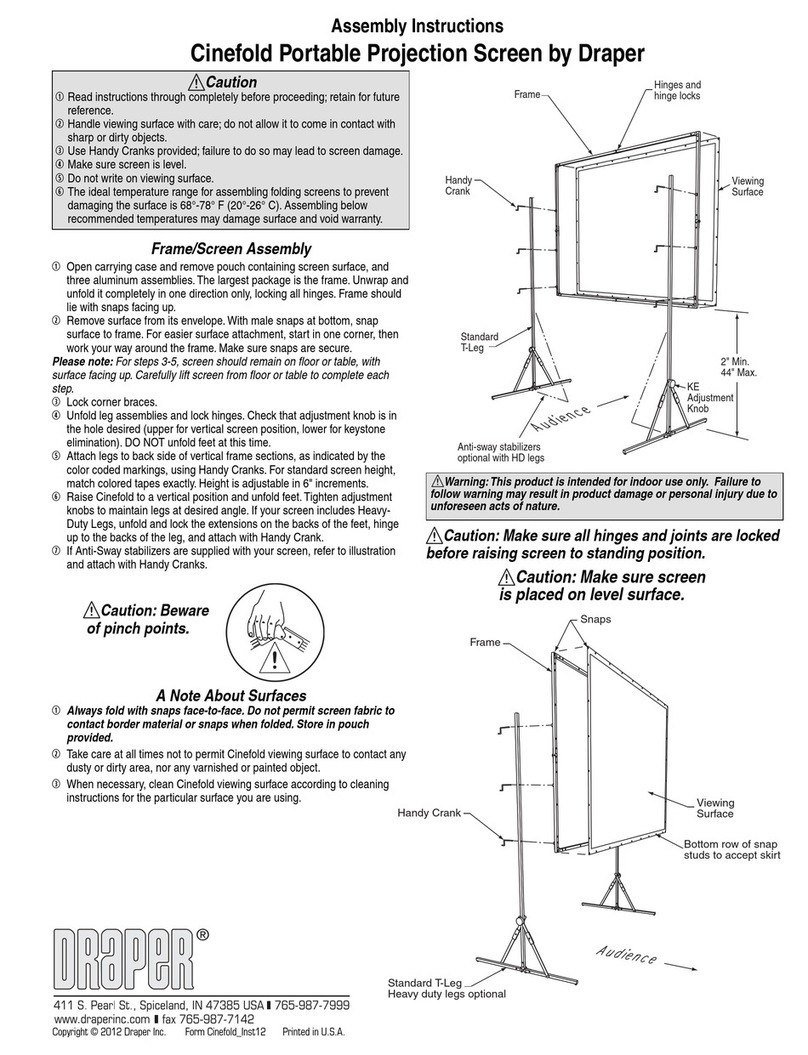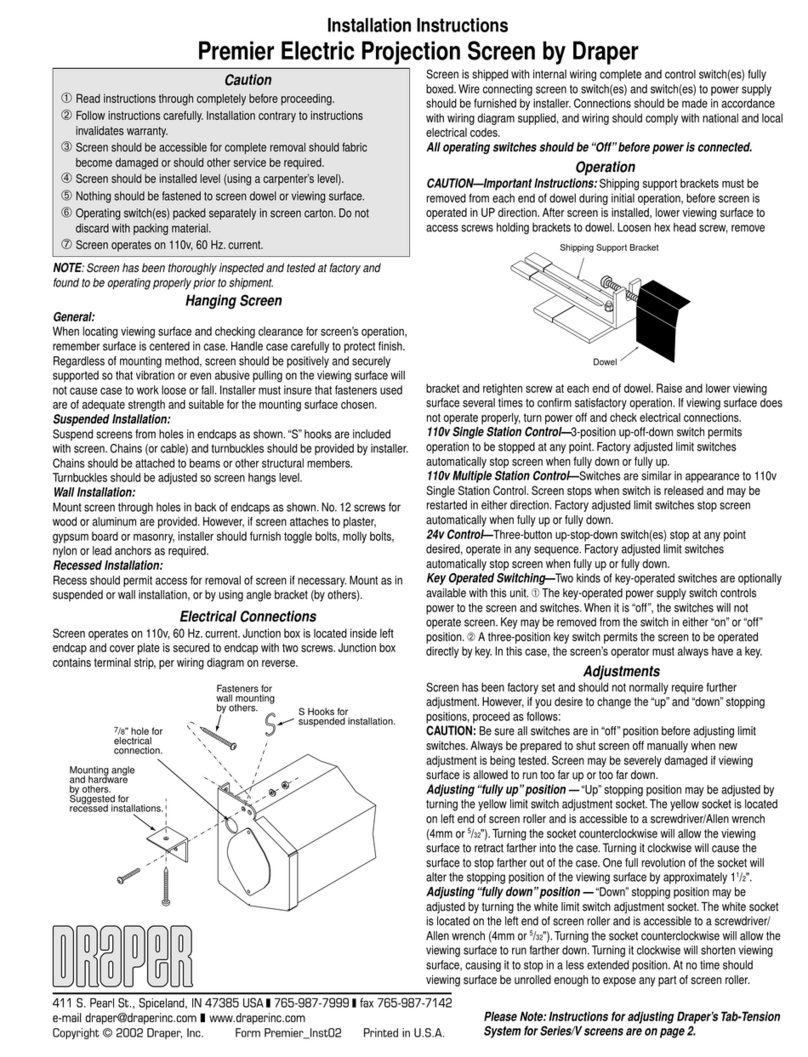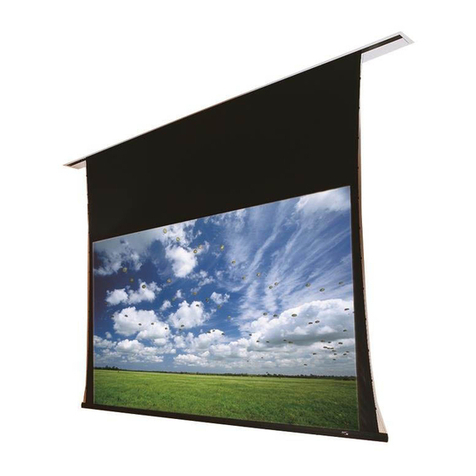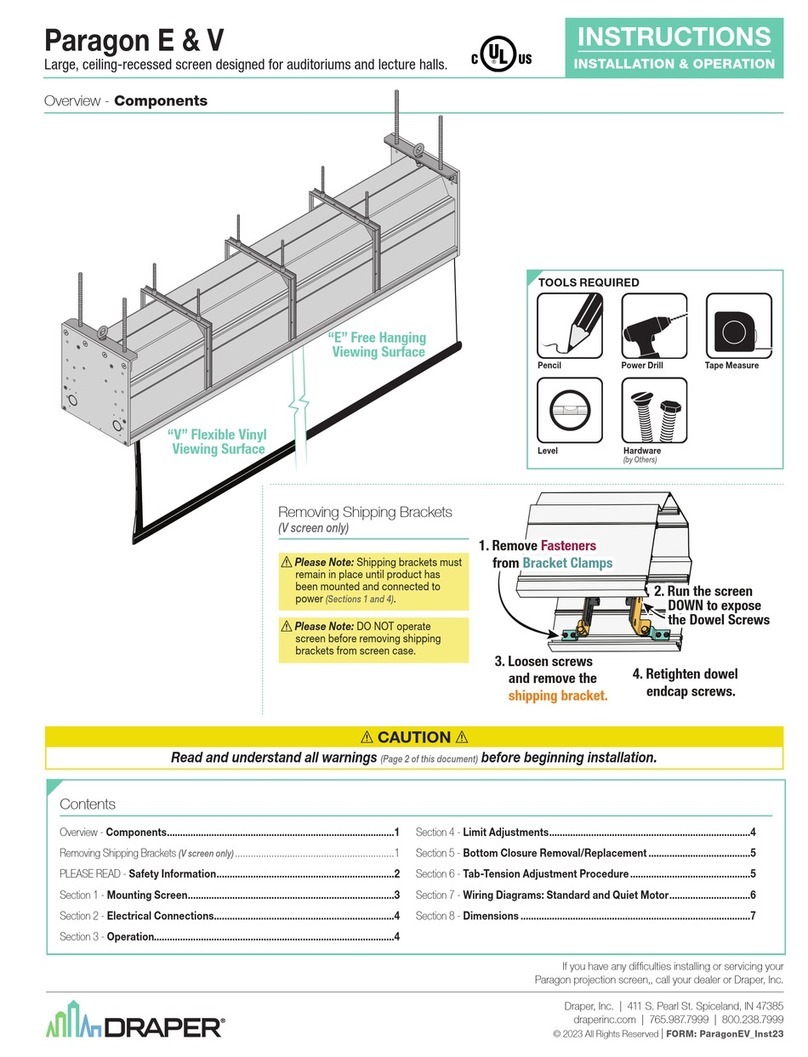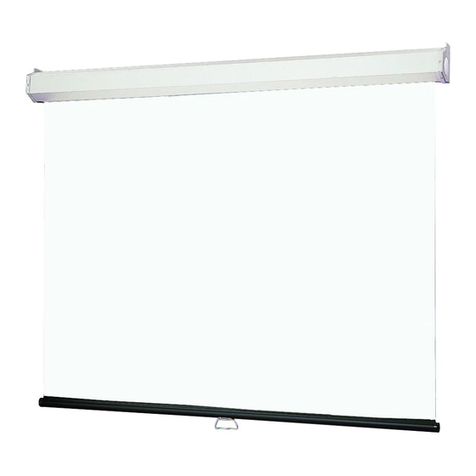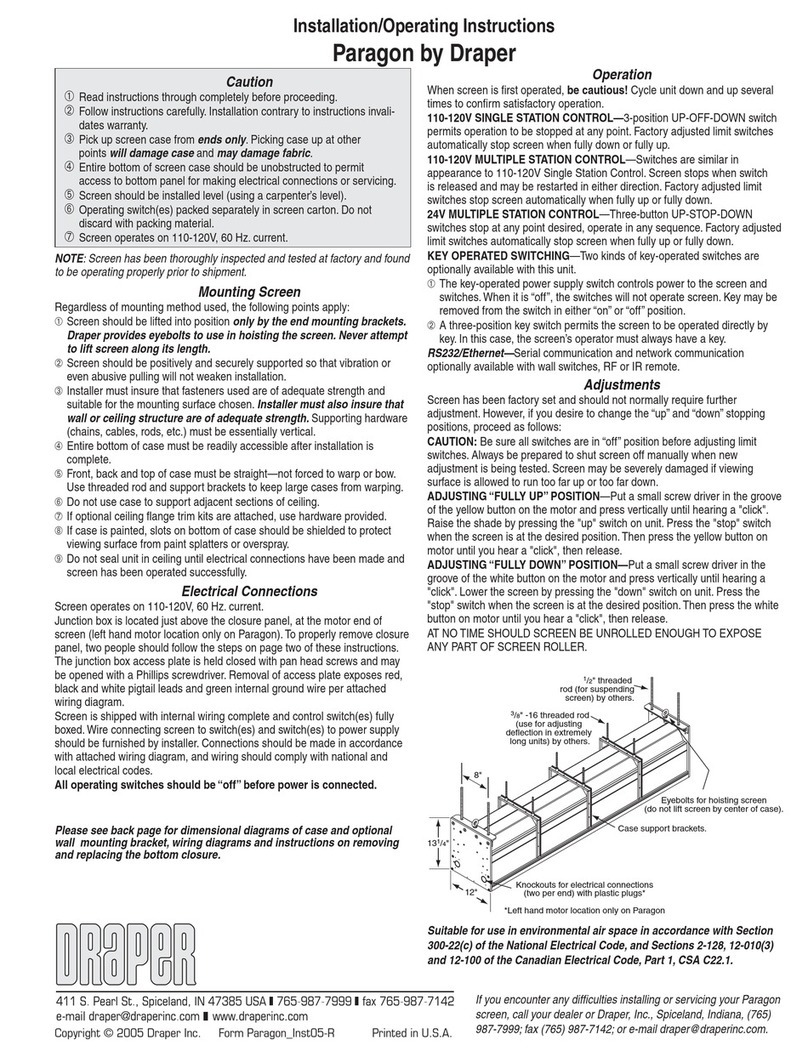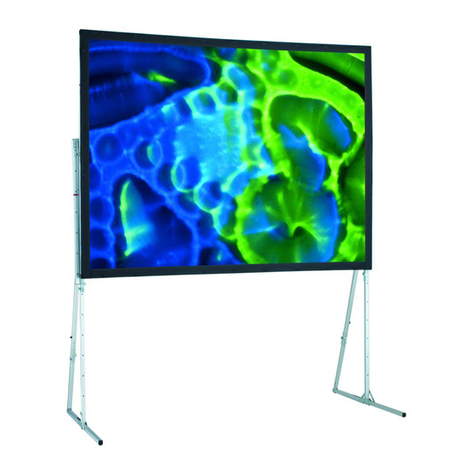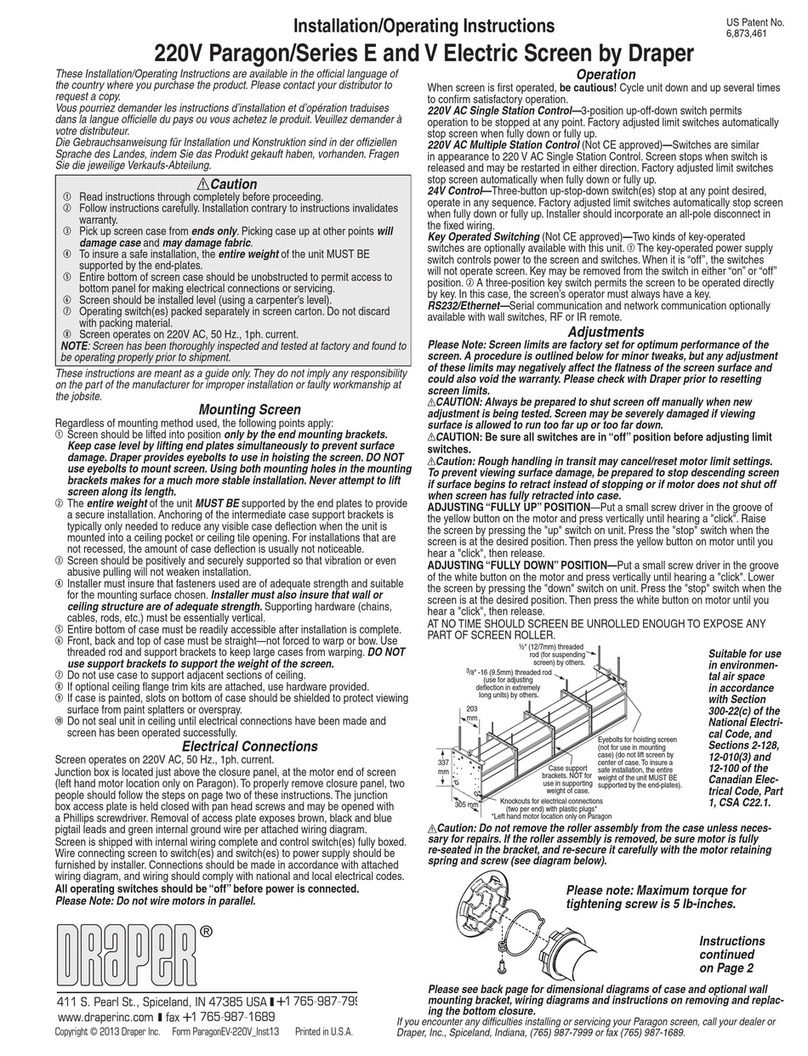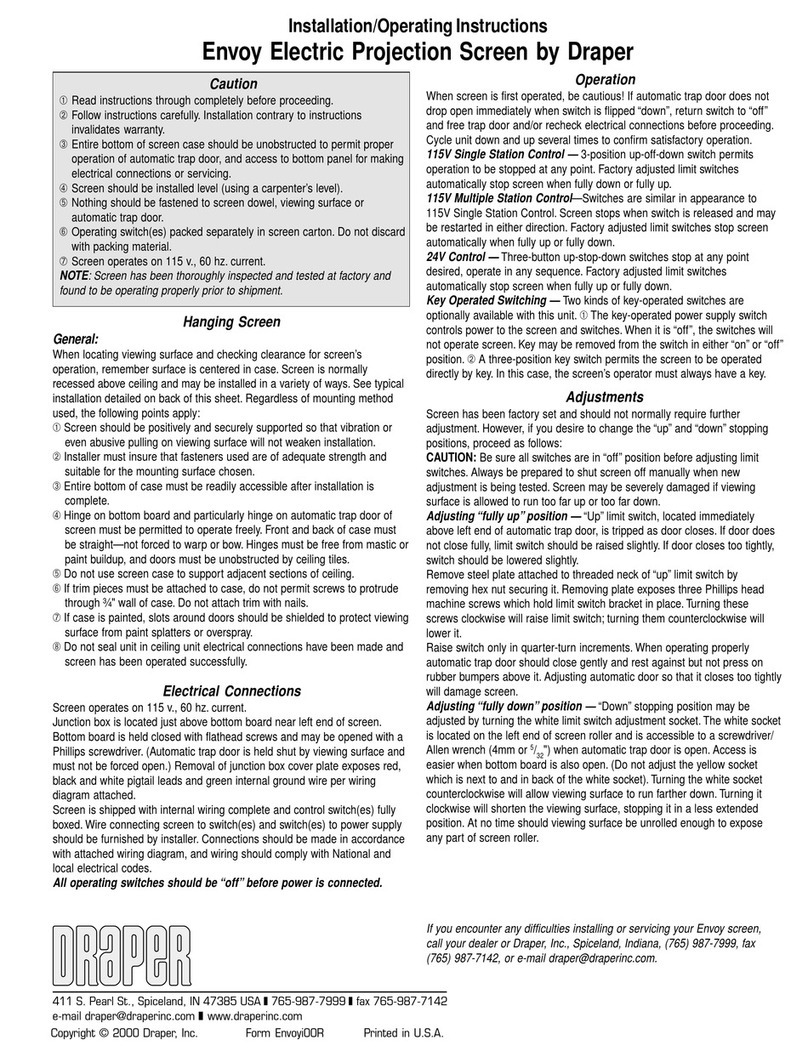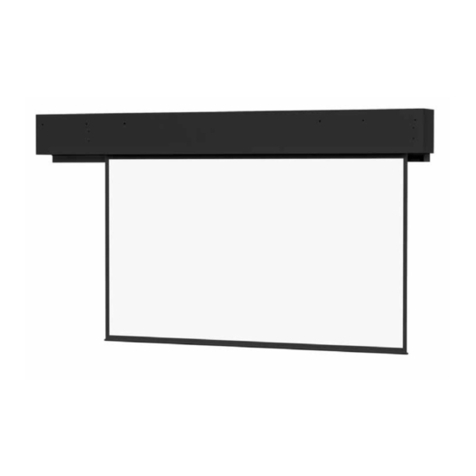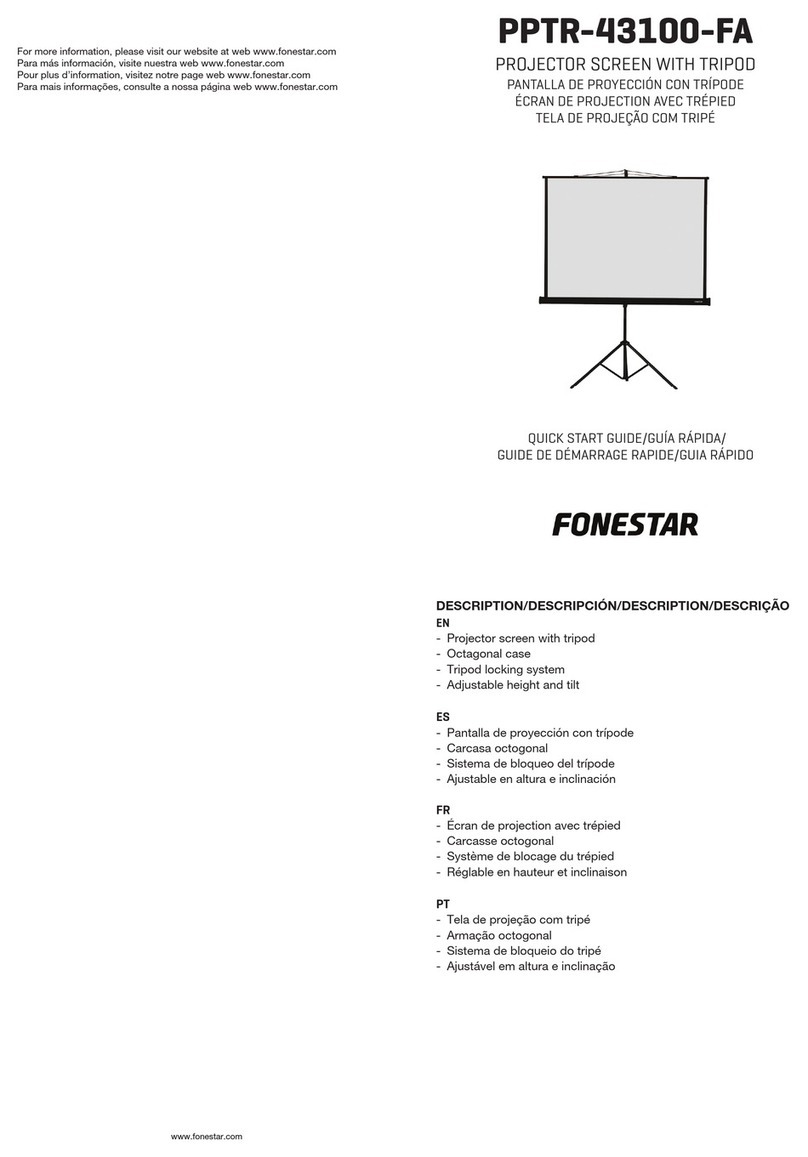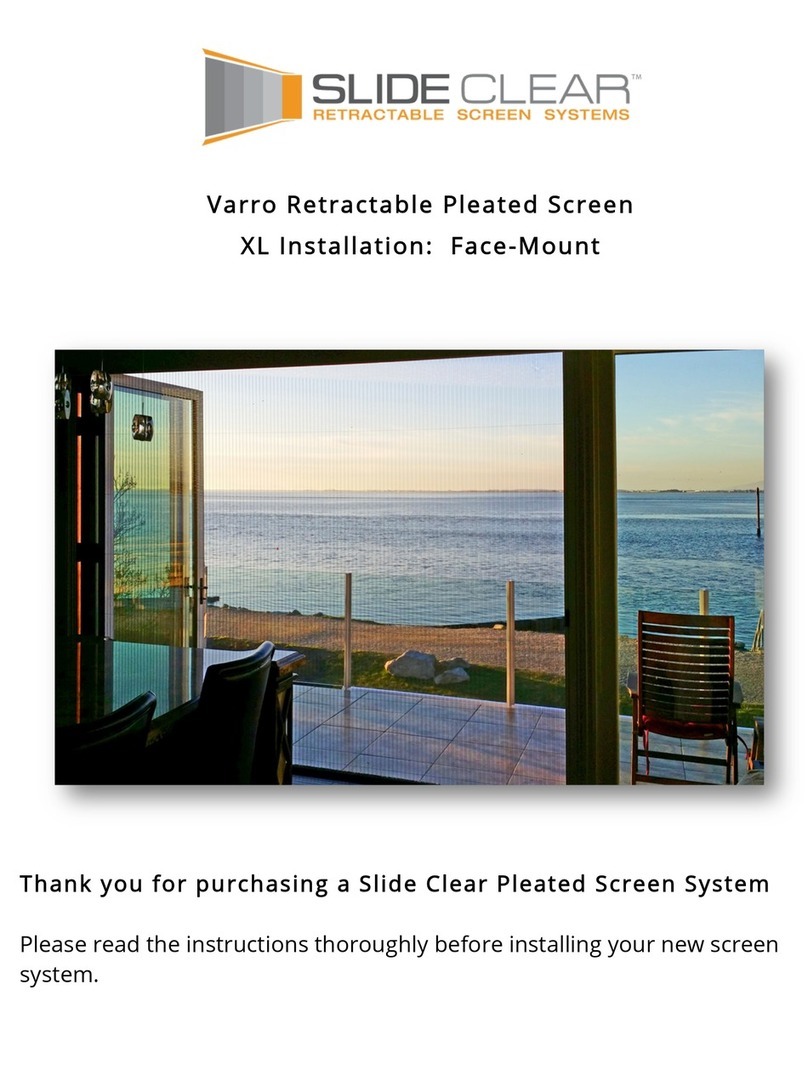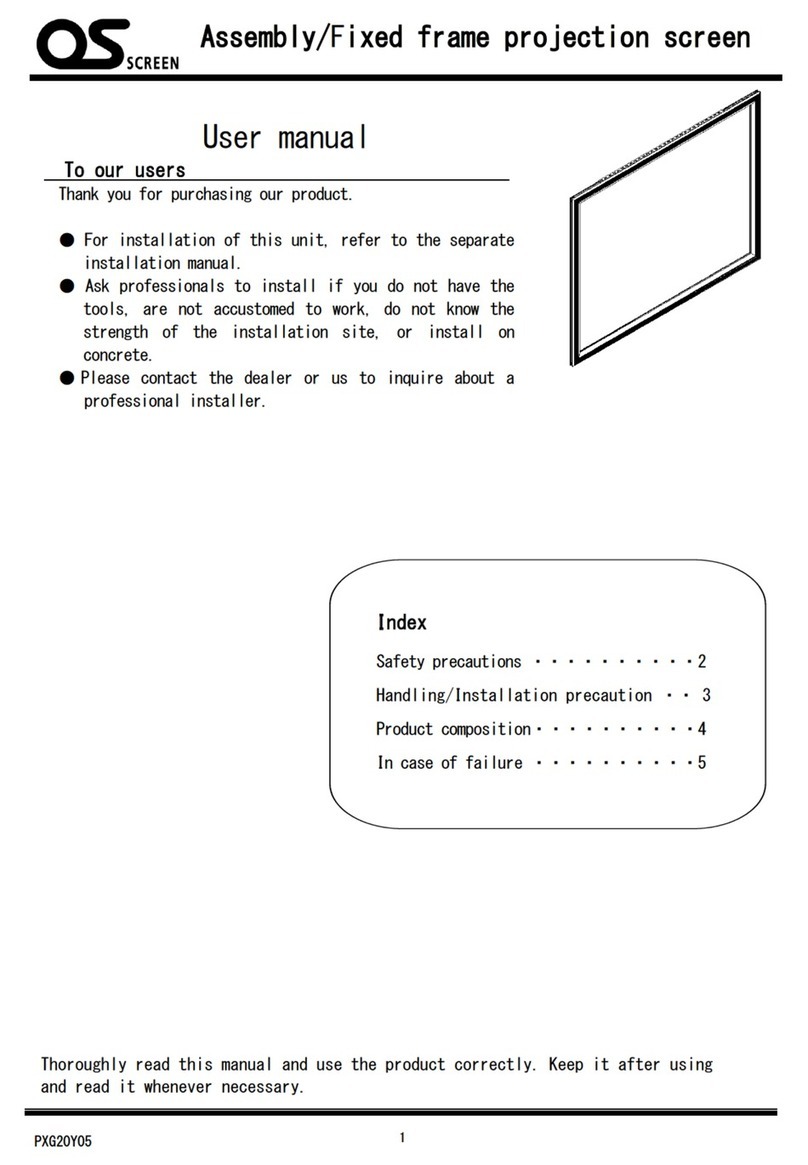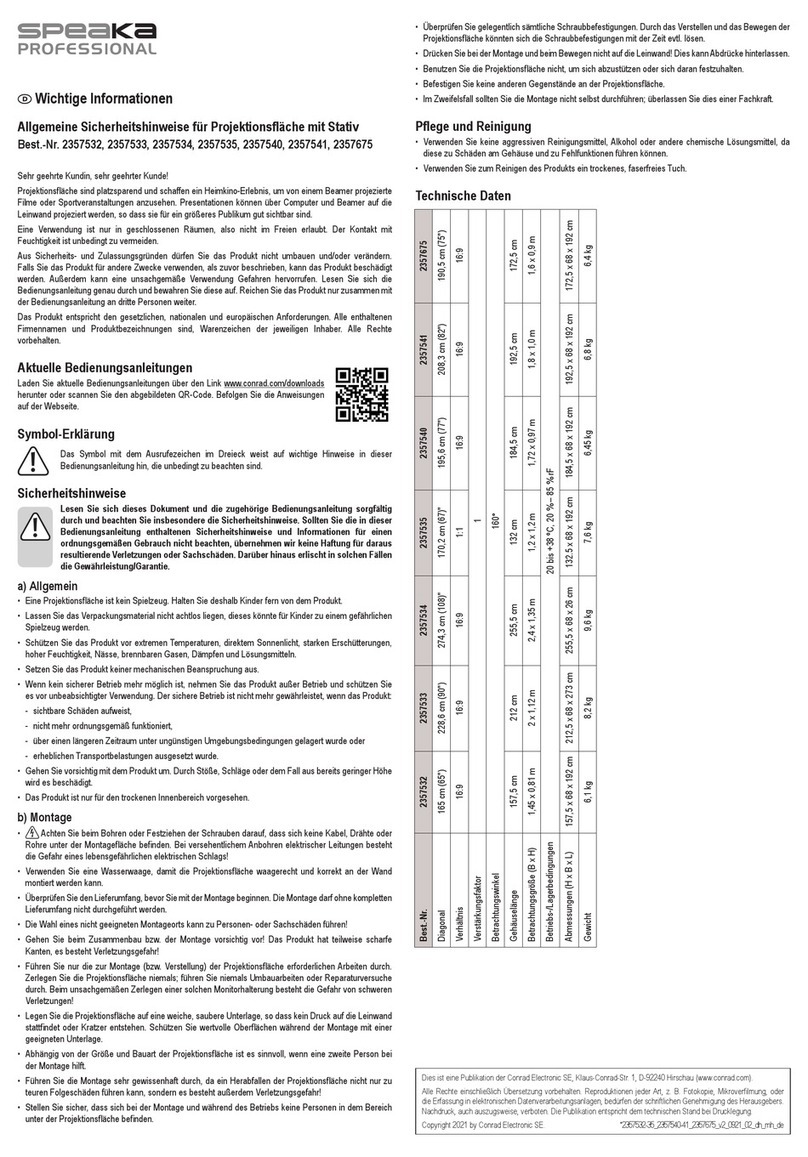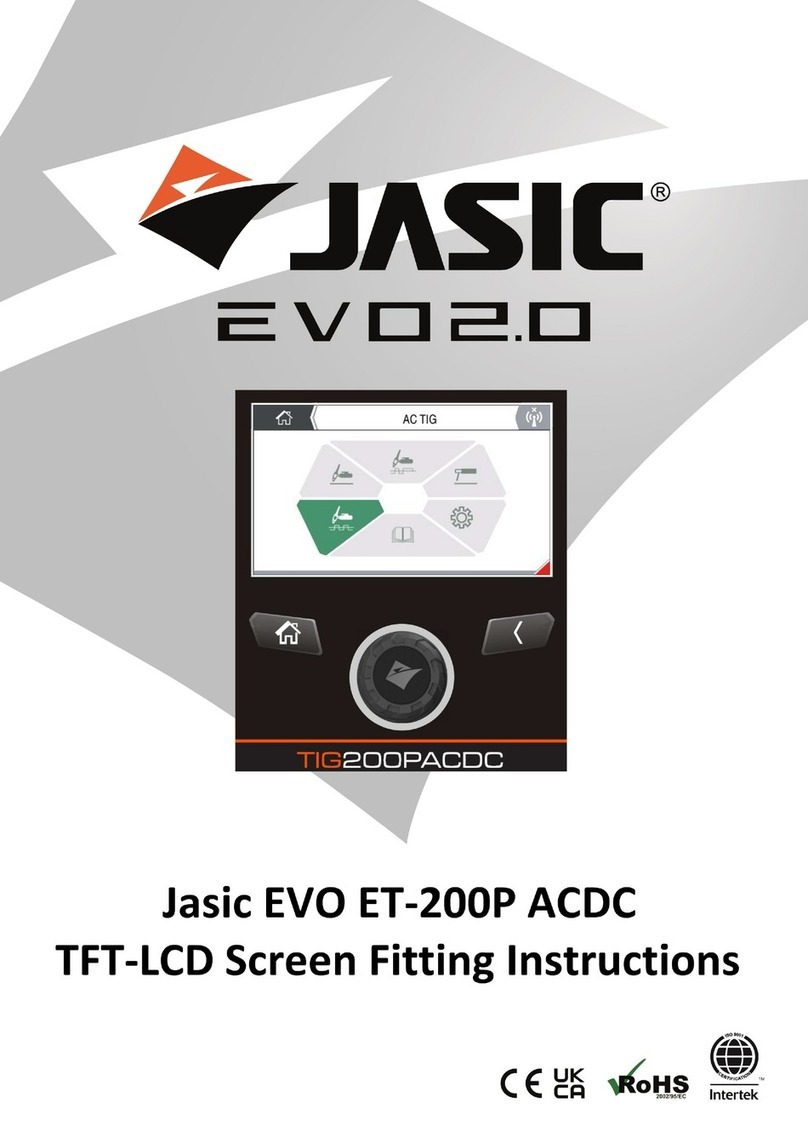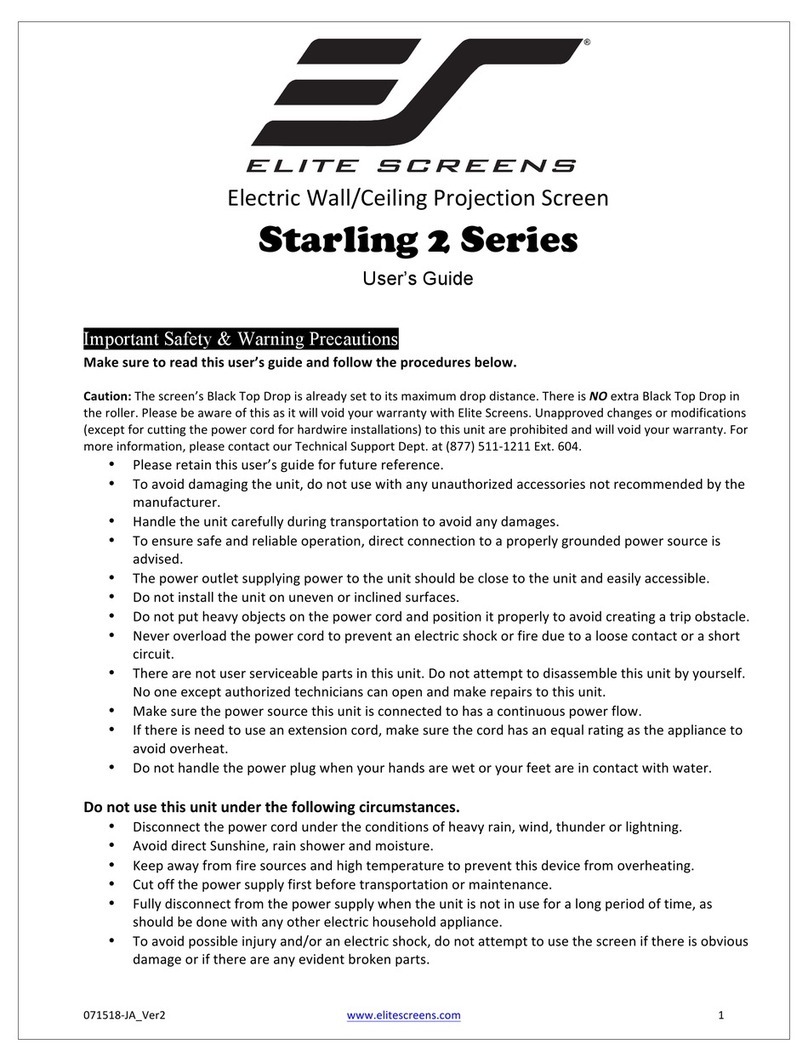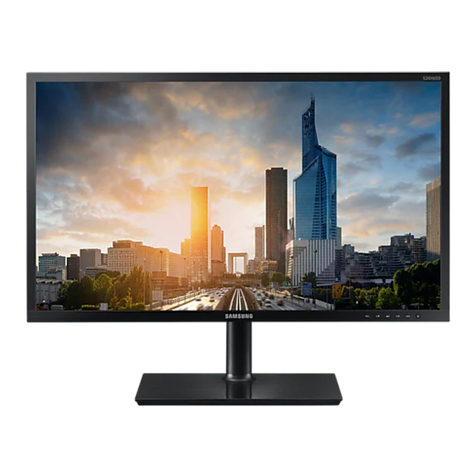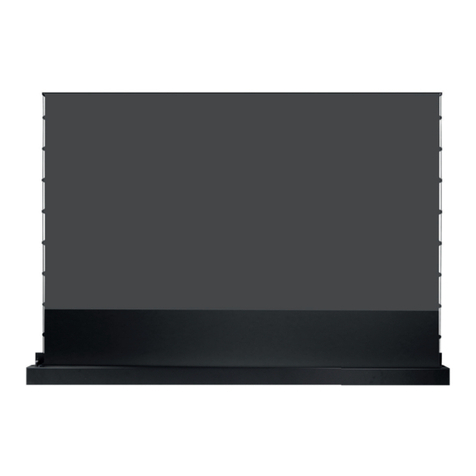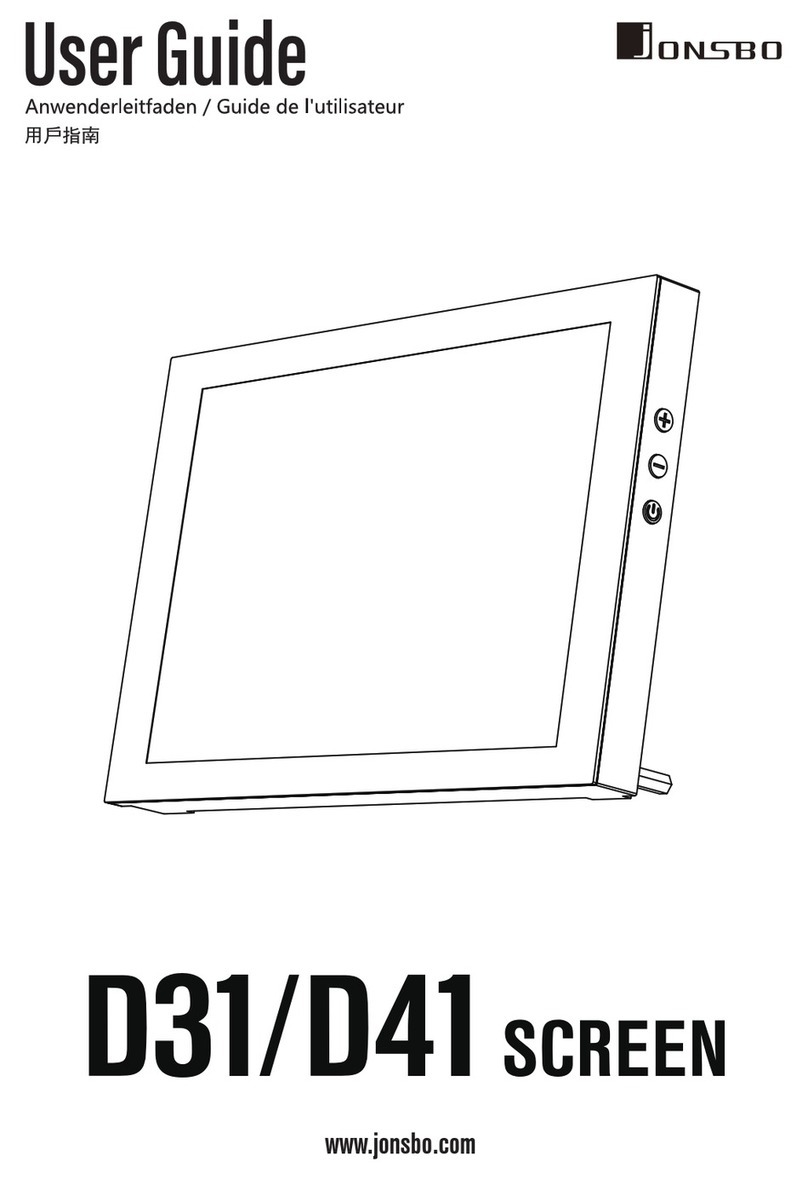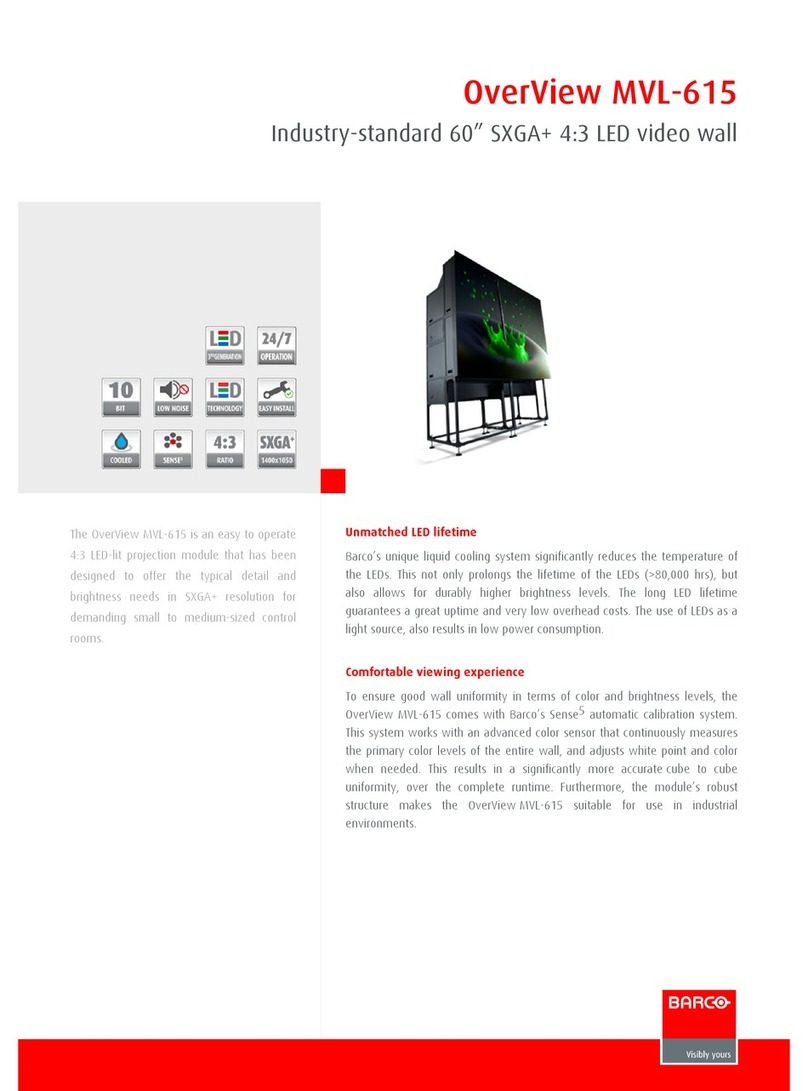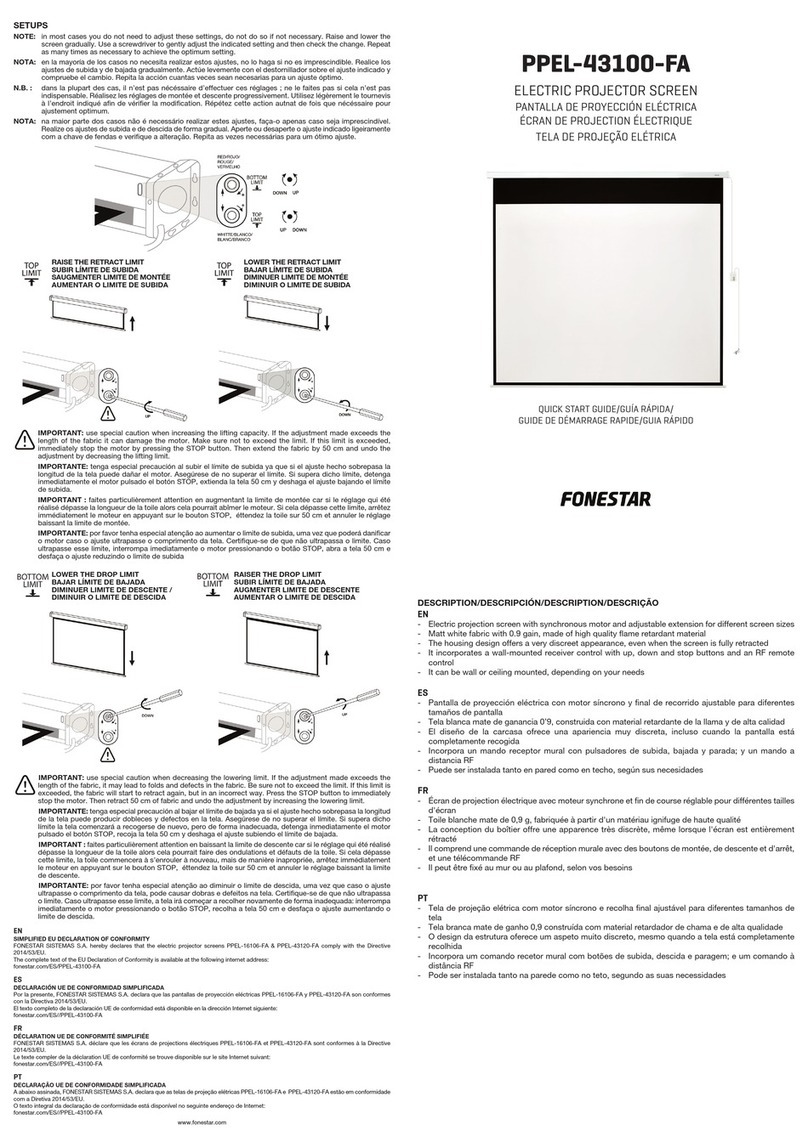
Installation/Operating Instructions
220V Envoy Electric Projection Screen by Draper
Copyright © 2010 Draper Inc. Form Envoy220v_Inst10 Printed in U.S.A.
Operation
When screen is first operated, be cautious! If automatic trap door does not
drop open immediately when switch is flipped “down”, return switch to “off”
and free trap door and/or recheck electrical connections before proceeding.
Cycle unit down and up several times to confirm satisfactory operation.
220V Single Station Control—3-position up-off-down switch permits opera-
tion to be stopped at any point. Factory adjusted limit switches automatically
stop screen when fully down or fully up.
220V Multiple Station Control (Not CE approved)—Switches are similar
in appearance to 220V Single Station Control. Screen stops when switch
is released and may be restarted in either direction. Factory adjusted limit
switches stop screen automatically when fully up or fully down.
24V Control—Three-button up-stop-down switches stop at any point desired,
operate in any sequence. Factory adjusted limit switches automatically stop
screen when fully up or fully down. Installer should incorporate an all-pole
disconnect in the fixed wiring.
Key Operated Switching (Not CE approved)—Two kinds of key-operated
switches are optionally available with this unit.
①
The key-operated power
supply switch controls power to the screen and switches. When it is “off”,
the switches will not operate screen. Key may be removed from the switch in
either “on” or “off” position.
①
A three-position key switch permits the screen
to be operated directly by key. In this case, the screen’s operator must always
have a key.
RS232/Ethernet—Serial communication and network communication
optionally available with wall switches, RF or IR remote.
Adjustments
Screen has been factory set and should not normally require further adjust-
ment. However, if you desire to change the “up” and “down” stopping positions,
proceed as follows:
CAUTION: Be sure all switches are in “off ” position before adjusting limit
switches. Always be prepared to shut screen off manually when new adjust-
ment is being tested. Screen may be severely damaged if viewing surface is
allowed to run too far up or too far down.
Adjusting “fully up” position — “Up” limit switch, located immediately
above left end of automatic trap door, is tripped as door closes. If door does
not close fully, limit switch should be raised slightly. If door closes too tightly,
switch should be lowered slightly.
Remove steel plate attached to threaded neck of “up” limit switch by removing
hex nut securing it. Removing plate exposes three Phillips head machine
screws which hold limit switch bracket in place. Turning these screws clock-
wise will raise limit switch; turning them counterclockwise will lower it.
Raise switch only in quarter-turn increments. When operating properly auto-
matic trap door should close gently and rest against but not press on rubber
bumpers above it. Adjusting automatic door so that it closes too tightly will
damage screen.
Adjusting “fully down” position — “Down” stopping position may be ad-
justed by turning the white limit switch adjustment socket. The white socket is
located on the left end of screen roller and is accessible to a screwdriver/Allen
wrench (4mm or
5/32
") when automatic trap door is open. Access is easier
when bottom board is also open. (Do not adjust the yellow socket which is
next to and in back of the white socket). Turning the white socket counter-
clockwise will allow the viewing surface to run farther down. Turning it clock-
wise will shorten the viewing surface, causing it to stop in a less extended
position. At no time should viewing surface be unrolled enough to expose any
part of screen roller.
®
If you encounter any difficulties installing or servicing your Envoy screen, call your
dealer or Draper, Inc. Spiceland, Indiana, USA, 765/987-7999 or fax 765/987-1689.
Caution
①
Read instructions through completely before proceeding.
②
Follow instructions carefully. Installation contrary to instructions invali-
dates warranty.
③
Do not lift case in center. Lift the ends simultaneously to avoid damage
to case and surface.
④
Entire bottom of screen case should be unobstructed to permit proper
operation of automatic trap door, and access to bottom panel for making
electrical connections or servicing.
⑤
Screen should be installed level (using a carpenter’s level).
⑥
Nothing should be fastened to screen dowel, viewing surface or
automatic trap door.
⑦
Operating switch(es) packed separately in screen carton. Do not discard
with packing material.
⑧
Screen operates on 220V AC, 50 Hz., 1 ph. current.
These Installation/Operating Instructions are available in the official
language of the country where you purchase the product. Please contact your
distributor to request a copy.
Vous pourriez demander les instructions d’installation et d’opération
traduises dans la langue officielle du pays ou vous achetez le produit. Veuillez
demander à votre distributeur.
Die Gebrauchsanweisung für Installation und Konstruktion sind in der
offiziellen Sprache des Landes, indem Sie das Produkt gekauft haben,
vorhanden. Fragen Sie die jeweilige Verkaufs-Abteilung.
Hanging Screen
General:
When locating viewing surface and checking clearance for screen’s operation,
remember surface is centered in case. Screen is normally recessed above
ceiling and may be installed in a variety of ways. See typical installation
detailed on back of this sheet. Regardless of mounting method used, the
following points apply:
①
Screen should be lifted into position only by the mounting brackets.
Keep case level by lifting both ends simultaneously to prevent
surface damage. Never attempt to lift screen along its length.
②
Screen should be positively and securely supported so that vibration or
even abusive pulling on viewing surface will not weaken installation.
③
Installer must insure that fasteners used are of adequate strength and
suitable for the mounting surface chosen.
④
Entire bottom of case must be readily accessible after installation is
complete.
⑤
Hinge on bottom board and particularly hinge on automatic trap door of
screen must be permitted to operate freely. Front and back of case must
be straight—not forced to warp or bow. Hinges must be free from mastic
or paint buildup, and doors must be unobstructed by ceiling tiles.
⑥
Do not use screen case to support adjacent sections of ceiling.
⑦
If trim pieces must be attached to case, do not permit screws to protrude
through 19 mm (¾") wall of case. Do not attach trim with nails.
⑧
If case is painted, slots around doors should be shielded to protect
viewing surface from paint splatters or overspray.
⑨
Do not seal unit in ceiling until electrical connections have been made
and screen has been operated successfully.
Electrical Connections
Screen operates on 220V AC, 50 Hz., 1 ph. current.
Junction box is located just above bottom board near left end of screen.
Bottom board is held closed with flathead screws and may be opened with a
Phillips screwdriver/Allen wrench (4mm or
5
/
32
"). (Automatic trap door is held
shut by viewing surface and must not be forced open.) Junction box contains
brown, black and blue pigtail leads and green internal ground wire, per wiring
diagram on reverse.
NOTE: Screen has been thoroughly inspected and tested at factory and
found to be operating properly prior to shipment.
Screen is shipped with internal wiring complete and control switch(es) fully
boxed. Wire connecting screen to switch(es) and switch(es) to power supply
should be furnished by installer. Connections should be made in accordance
with attached wiring diagram, and wiring should comply with National and
local electrical codes.
ALL OPERATING SWITCHES SHOULD BE “OFF” BEFORE POWER IS CONNECTED.
